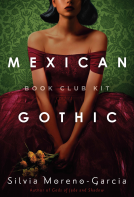
Fight for Old DC
George Preston Marshall, the Integration of the Washington Redskins, and the Rise of a New NFL
by Andrew O'Toole
This title was previously available on NetGalley and is now archived.
Send NetGalley books directly to your Kindle or Kindle app
1
To read on a Kindle or Kindle app, please add kindle@netgalley.com as an approved email address to receive files in your Amazon account. Click here for step-by-step instructions.
2
Also find your Kindle email address within your Amazon account, and enter it here.
Pub Date Nov 01 2016 | Archive Date Nov 01 2016
Description
To separate his franchise from the baseball team, he renamed it the Redskins in 1933 and then moved his team to Washington DC in 1937, where the team won two NFL championships over the next decade. But it was off the field that Marshall made his lasting impact. An innovator, he achieved many “firsts” in professional football. His teams were the first to telecast all their games, have their own fight song and a halftime show, and assemble their own marching band and cheerleading squad. He viewed football as an entertainment business and accordingly made changes to increase scoring and improve the fan experience.
But along with innovation, there was controversy. Marshall was a proud son of the South, and as the fifties came to a close, his team remained the only franchise in the three major league sports to not have a single black player. Marshall came under pressure from Congress and the NFL and its president, Pete Rozelle, as league expansion and new television contract possibilities forced the issue on the reluctant owner. Outside forces finally pushed Marshall to trade for Bobby Mitchell, the team's first black player, in 1962. With the story of Marshall's holdout as the backdrop, Fight for Old DC chronicles these pivotal years when the NFL began its ascent to the top of the nation's sporting interest.
Available Editions
| EDITION | Hardcover |
| ISBN | 9780803299351 |
| PRICE | $29.95 (USD) |
Links
Average rating from 5 members
Featured Reviews
 Jamie G, Reviewer
Jamie G, Reviewer
The idea of American football as a televisual spectacle. - half time shows, cheerleaders - originated from a racist mind whose team were the last to field a black player. The book is incredibly researched but has a plethora of characters that make it always engrossing when the racist behaviour of others may be hard to stomach
The Washington Redskins have had their share of recent controversy on social and racial issues but that is nothing new for the franchise. They were the last team in the National Football League to have an African-American player, mainly due to the hiring practices of their long-time owner George Preston Marshall. Andrew O’Toole penned this excellent book that details Marshall and his beliefs and business actions as well as the struggles of the Redskins team during the late 1950’s and early 1960’s.
While the book is not marketed as a biography, that is the best description as the reader will get an extensive look at the man who brought the Boston Braves to the nation’s capital. Also, the author is to be given credit for not focusing solely on the discriminatory practices of Marshall. Marshall was an innovator in professional football with rule changes and was able to get public funding for a brand new state-of-the-art stadium.
However, this did not come without much inquiry into why the Redskins would not let black players suit up in the burgundy and gold. Marshall’s reasons that were made public did sound like poor excuses and rather than pile on the criticism, O’Toole writes about this in a matter-of-fact style that allows the reader to come to his or her own conclusions. Marshall is not made out to be an evil or despicable man, but is certainly not excused for his behavior by the author.
This book also took a different approach to integration in a professional sport in that instead of focusing on the first black player to sign with the team, Bobby Mitchell, it instead focuses on the owner who won’t sign black players. Many other books on sports integration will concentrate on the struggles of the black player or players who made the groundbreaking appearances. O’Toole does write some about Mitchell and other black teammates who were the first black players for the Redskins in 1962, but their adventure is secondary to those of Marshall and his fight with U.S. Secretary of the Interior Stewart Udall, who threatened to pull back on support for the new stadium unless the Redskins could show they did not have discriminatory hiring practices.
This book was one that I enjoyed reading and is one that anyone interested in the integration of professional football will want to add to his or her library. The words and pages flow quickly as the reader in placed inside the mind and thoughts of one of the most interesting and controversial owners of professional football.
I wish to thank University of Nebraska Press for providing a copy of the book via NetGalley in exchange for an honest review.
Readers who liked this book also liked:
Silvia Moreno-Garcia
Historical Fiction, Literary Fiction, Sci Fi & Fantasy












